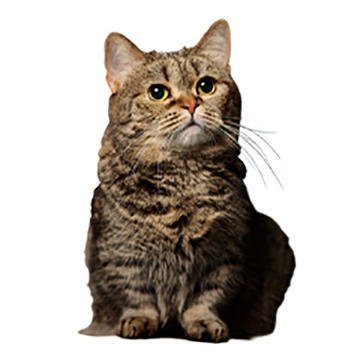Munchkin Cat

Size :
Small
Weight :
Between 5 to 9 pounds
Coat :
Long or Short
Color :
Colors and Patterns vary
Description
They may have short legs, but Munchkin Cats don’t let it hold them back. Although they can’t make big leaps like other breeds, they can make small jumps, climb and even sit back on their haunches to get a better look at something.
Temperament
They love to play with dogs, other pets and children. Their short legs actually give them an advantage, as it allows them to make tight maneuvers larger animals can’t.
Characteristics
With short legs and a long body, Munchkins look like the feline version of a Corgi or Dachshund. They have walnut-shaped eyes, triangular ears and can have either short or long coats.
Lifespan
12 to 15 years
Colors
The breed is maintained using an outcross program, which breeds other domestic cats with Munchkins to ensure gene diversity. As a result, these felines can come in an array of different colors and patterns.
Shedding
Munchkin cats will shed, particularly if they have a longer coat. They require combing twice a week to remove loose hair and to prevent tangles and matting. Comb short-haired Munchkins once a week.
Health
Despite its short legs and long back, Munchkin Cats do not have the spinal problems characteristic of dogs with short legs. Although they may not experience back problems, their genetic mutation does increase the risk of other health problems, including osteoarthritis caused by lordosis, or an inward curvature of the spine, and pectus excavatum, or “funnel chest”.
Choosing the Best Food for Munchkin Cats
Munchkins need a complete and balanced diet, coupled with regular exercise, to maintain a healthy weight and avoid unnecessary stress on their joints.Because of their short legs, your Munchkin kitty may need a shallower bowl than other breeds. If you have questions or concerns about your cat’s nutrition, consult with your veterinarian.
Choosing the Best Food for Munchkin Kittens
Your Munchkin kitten will also need a complete and balanced food that provides all the nutrients she’ll need to become a healthy, mature cat.
History
The first reports of cats with a genetic mutation causing short legs date back to the 1930s and 40s, but there was no trace of Munchkins throughout World War II. They resurfaced in the 1950s and 70s before being officially established as a breed in 1983.
In 1994, The International Cat Association (TICA) accepted the cat into their new breed development program, and they achieved championship status in 2003. The Cat Fanciers Association (CFA) and American Cat Fanciers Association (ACFA) still do not recognize the Munchkin as a breed.
Facts
- The Munchkin Cat’s short legs are the result of a genetic mutation.
- There are three different variations of the breed, depending on leg length.
- Munchkins like to hoard small, shiny objects and hide them away for later.